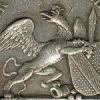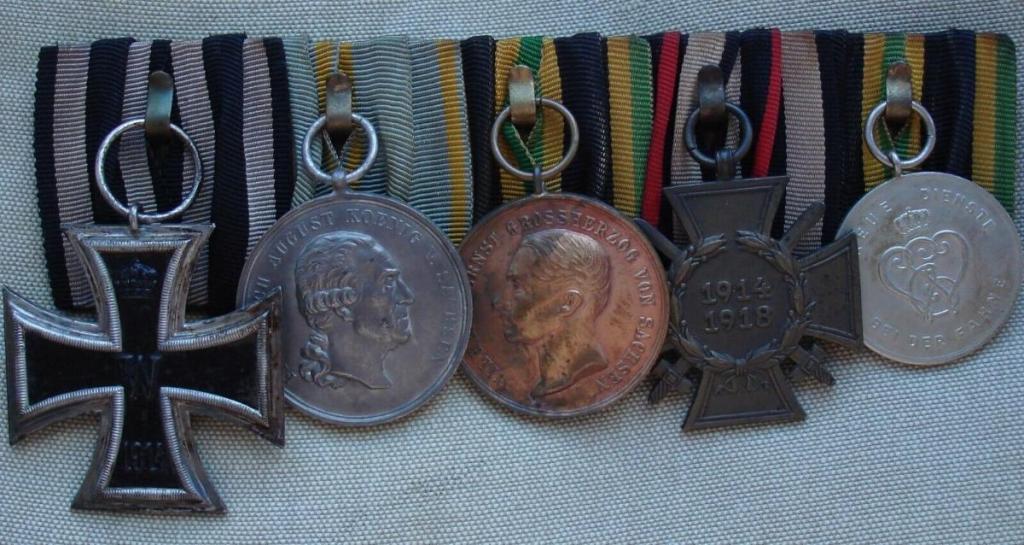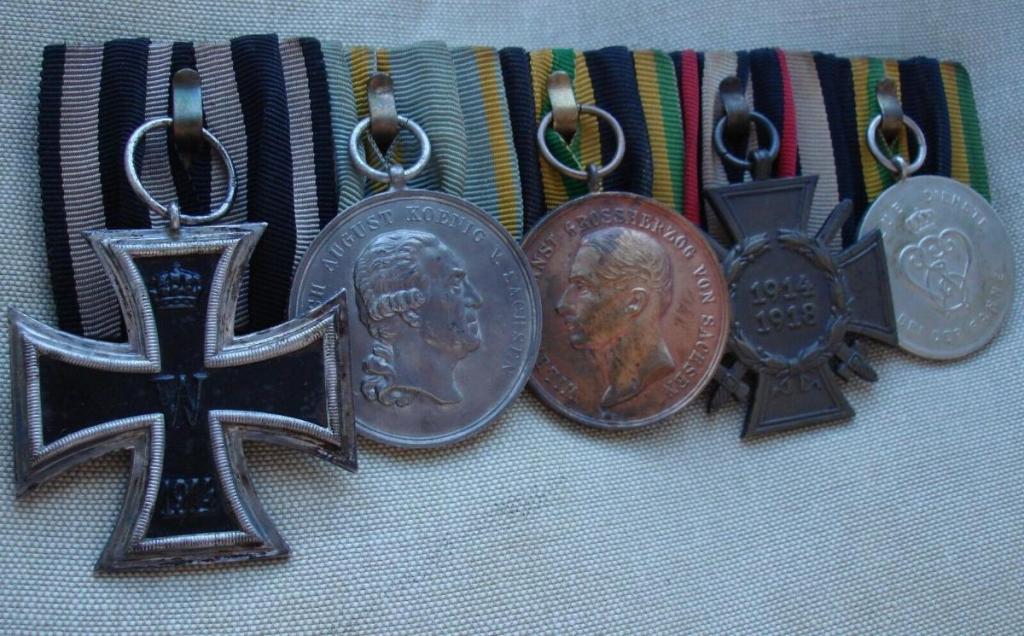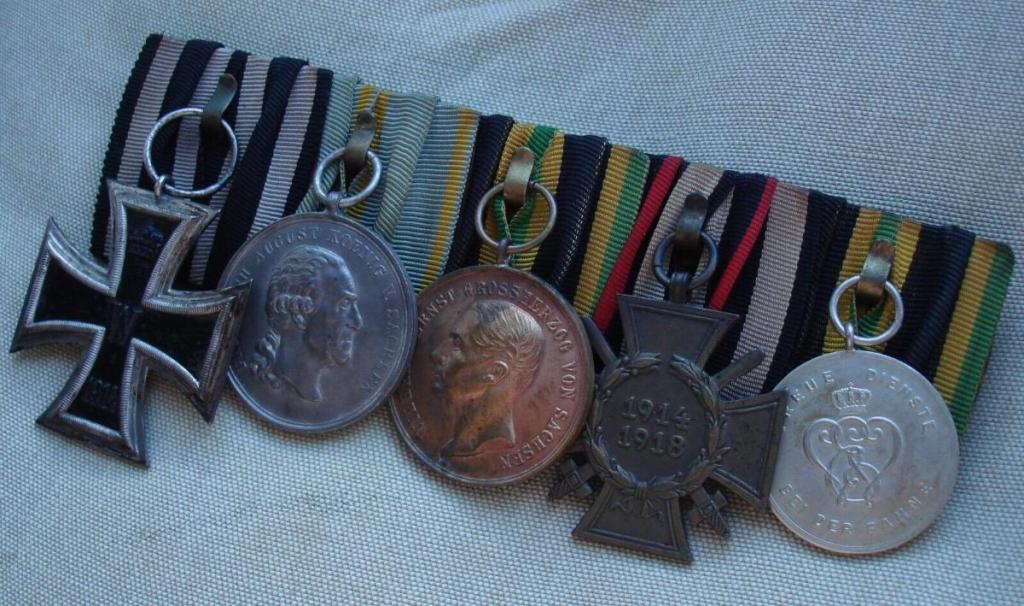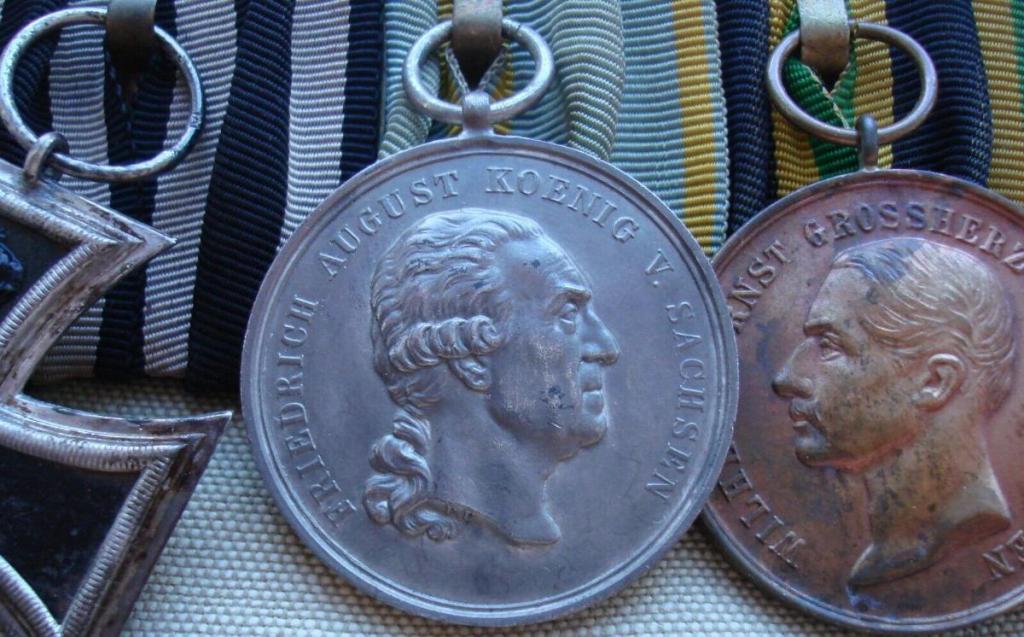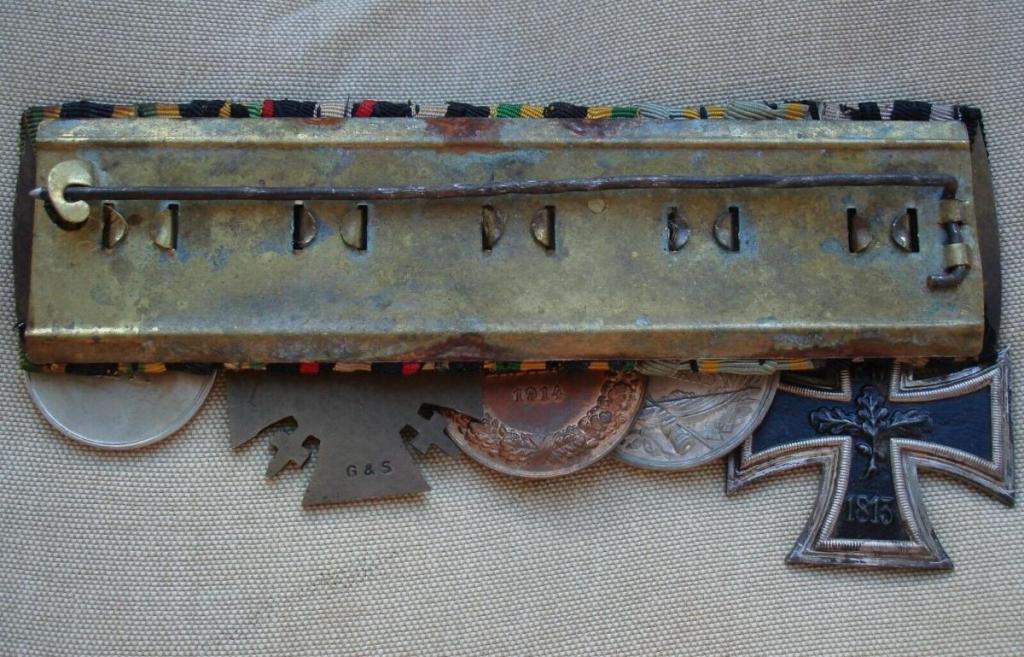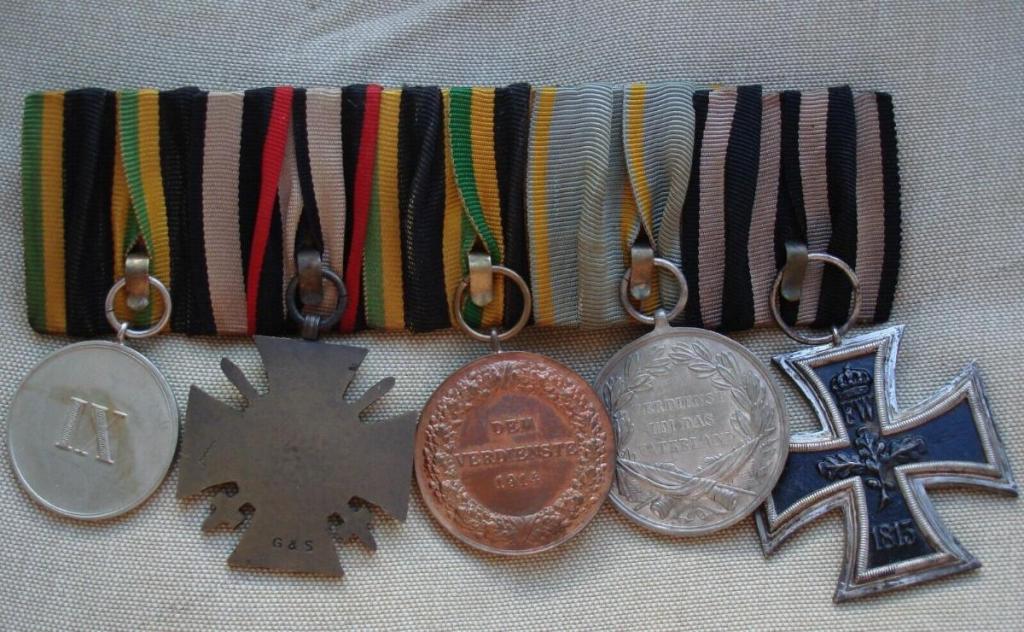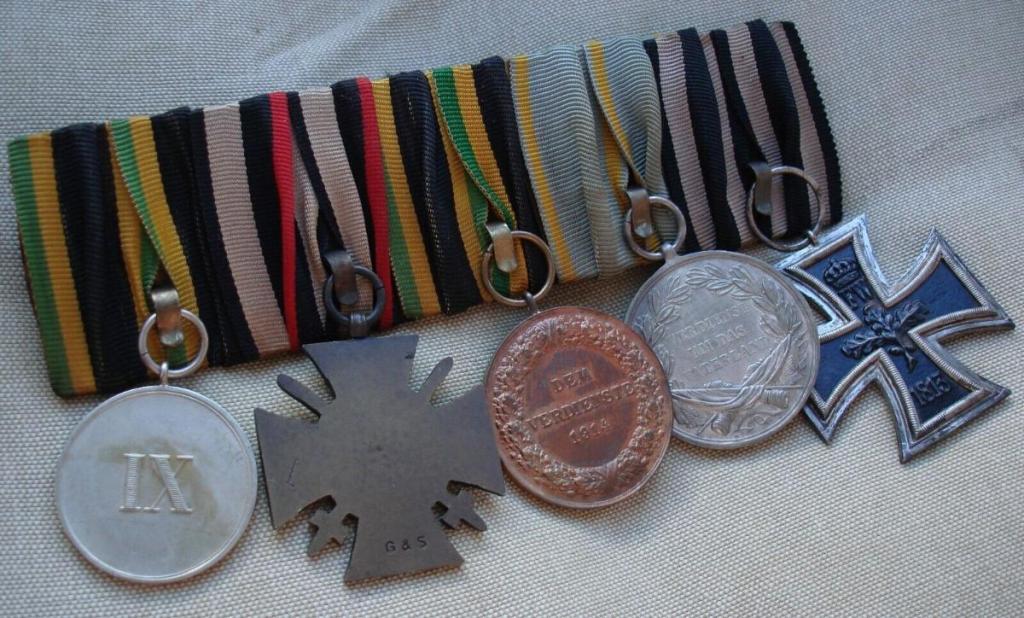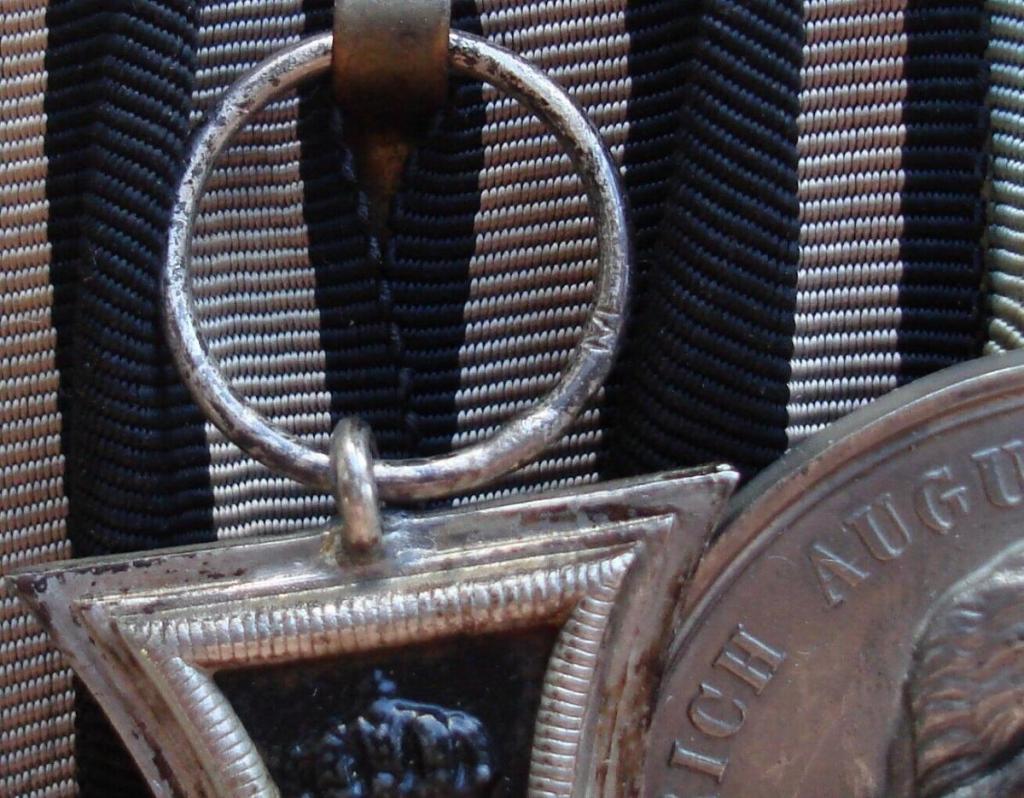-
Posts
3,086 -
Joined
-
Days Won
13
Content Type
Profiles
Forums
Blogs
Gallery
Events
Store
Everything posted by saschaw
-
Just one petty addition: His rank within the Prussian Johanniterorden is called Rechtsritter, not Reichsritter. Other than the Ehrenritter, the entry-level who were simply appointed, these received an actual dubbing by the Herrenmeister. The English and French terms for Reichsritter would be "Knight of Justice" respectively "chevalier de justice".
-
Similar to General der Infanterie Hugo Freiherr von Freytag-Loringhoven, the Kommandierende General Kurt Freiherr von Manteuffel received Baden's Zähringer Lion order Grand Cross with swords (BZ1X) - on January 27, 1916, to be precise. Are you sure that's the same grade, and thus a reclassification? Or might he have been awarded with the higher grade in the meantime? I don't have an appropriate rank list handy right now...
-
Not a major expert in Ottoman medals, but I always thought it was rather the other way around: arts, science and such in the pre-WW1 era, and then, during the war, a merit medal for a much wider field, and often used when medals for actual courage seemed unsuitable. Hadn't noticed before, but I find it absolutely remarkable "your man" received bravery or war medals from four(!) different states before he was awarded the mere Iron Cross!
-
What an absolutely beautiful medal bar! What I like the most, besides its provenience, of course, is the fact it combines bravery awards from five different German states, without any commemoratives, jubilee medals, long service awards and such. The Rettungsmedaille am Bande is just the icing on the cake! One minor correction, though: the decoration in last place is from the principality of Lippe (so-called "Lippe-Detmold"), not from Schaumburg-Lippe. No doubt you know this, but others that stumble upon this remarkable thread might not...
-
Not to me. It's seemingly massive silver, and it has the proper die characteristics. The Schnallenstücke are usually silvered brass or even zink, and exhibit an inferior design quality; some don't even have the proper inscription "KRIEGER / VERDIENST". December last year, in their eLive Auction 75, Künker sold more than twenty(!) "doublets" from the famous Peter Groch collection. They make quite a reference! I do agree the market value of Jannis' piece is negligible.
-
Despite everything being possible, I think a Baden long service medal is very unlikely in this group, not least because it should not be worn in combination with the Wehrmacht duo that replaced it! Assuming some odd discoloration, I'm with Christophe: This is most likely the Bavarian 1905 Jubiläumsmedaille für die Armee, or - maybe even more likely - one of the other Bavarian medals worn on the same ribbon: The Bronzene Prinzregent-Luitpold-Medaille am Bande der Jubiläumsmedaille from 1911/12, and the semi-official Goldene-Hochzeits-Erinnerungsmünze from 1918 that wasn't handed out until the early 1920s. There's no way to know for sure...
-
The major question has been answered, but fussy as we phalerists can be, there are some additions and corrections to be made: Nonn's Baden Zähringer Lion order was a knight's cross 2nd class with oak leaves and swords, and Lippe's Kriegsverdienstkreuz was no "second class" because it came in only one grade. The Allgemeines Ehrenzeichen from Hessen is certainly an issue for bravery, as could be read on the reverse... it is "Für Tapferkeit", right?
-
While they technically could have been awarded during the war, I think that's very unlikely. The only apparent war decoration is the König-Ludwig-Kreuz, and I'm confident most others had already been awarded earlier than 1914. After all, this bar represents a four-decade-long career! What's noteworthy as well is the tailor's tag on the reverse. Max Küst from Berlin? That's far from the wearer's Bavarian home - and I wonder if it might be a clue! Still no idea, though, where to look for such a civilian if not in the Bavarian Hof- und Staatshandbuch... By the way, the Princely Hohenzollern decoration could, from the pictures, be either a Silberne Verdienstmedaille or a Goldene Ehrenmedaille ! It's really difficult if not impossible to distinguish their usual thin galvanic gold layer from a nice "golden" silver patina.
-
Is this yours, and could you provide higher-quality pictures? I fear we cannot be definitive from what can be seen here. It generally does look good, but I see something that might be a red flag. It's certainly not a piece to be judged from three mediocre pictures. The thing is these have been heavily faked since the 1980s, sometimes in incredibly high quality. I guess this is what eos512 is referring to...
-
Cannot add anything to the provenience, unfortunately, but... ... this is not a Wernstein made cross! The marking "5" on this WW1 era cross could be anything, but not a 1940s PKZ marking. Probably just some control mark to attribute the cross to a specific worker within the factory, or to a specific batch of production. I guess that's still debated. Also, the bar - especially its backing - does not look like 1930s to me. Rather 1950s or 1960s? I have similar groups that contain World War 2 era awards in the de-nazified BRD/FRG design. Are you sure this group was "captured" in 1945, and not possibly obtained some years later? Please, don't get me wrong: I'm not saying (or implying) it's fake! Maybe just a bit younger than we assumed...
-
According to this list recently published by Daniel Krause, he also wore the Grand Cross with swords (but no oak leaves, due to him skipping the 1st class) of the Red Eagle Order. The only source seems to be a portrait of v. Below where he wears it en sautoir. Seems to have been a "give-away" alongside the Black Eagle...



